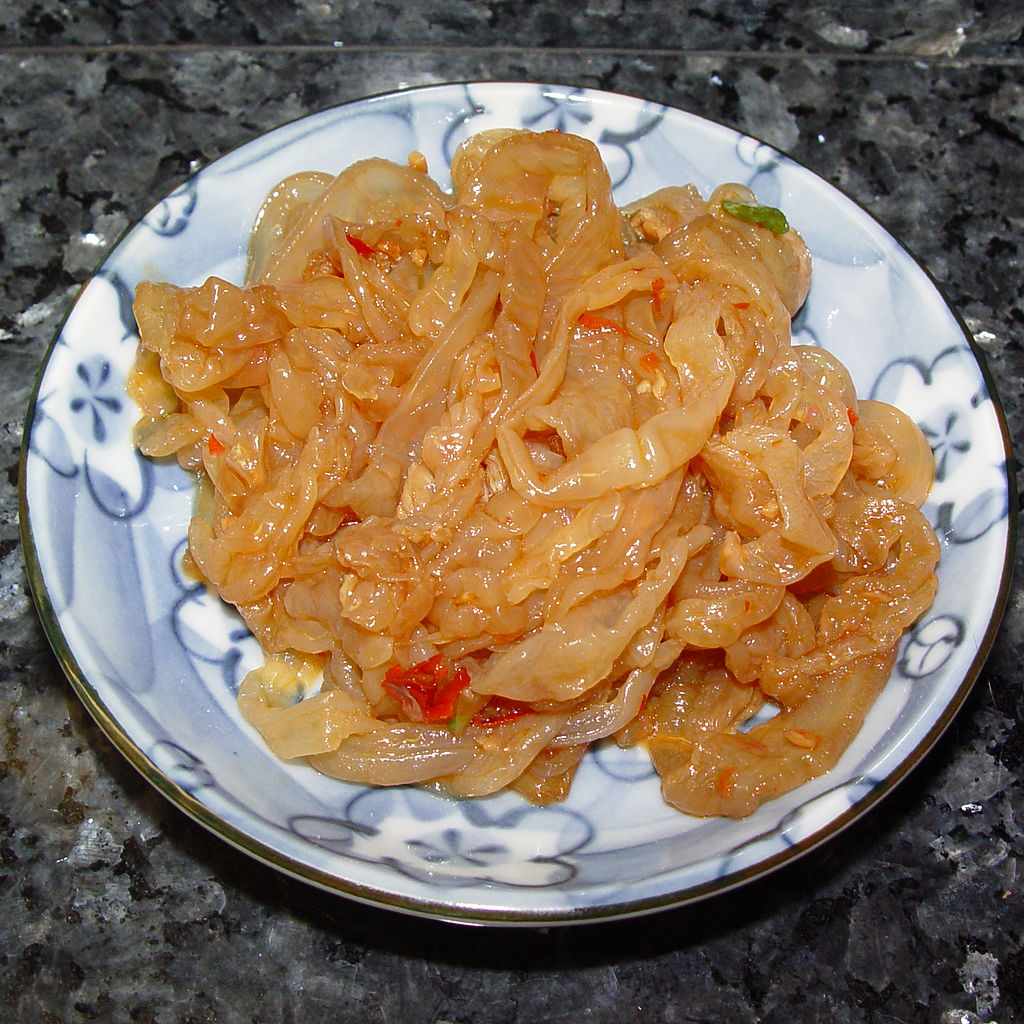Jellyfish meals, an intriguing and lesser-known culinary pleasure, provides an interesting glimpse into the arena of marine gastronomy. From their distinctive filter-feeding mechanisms to their dietary worth and cultural importance, jellyfish provide a compelling case for exploration and appreciation.
On this complete information, we delve into the intricacies of jellyfish diets, analyzing the position of plankton, the bodily variations that permit clear out feeding, and the dietary content material of those gelatinous creatures. We additionally discover the ancient and cultural importance of jellyfish as a meals supply, discussing the demanding situations and alternatives related to their harvesting and processing, and analyzing their attainable for aquaculture.
Plankton Intake

Plankton constitutes a very important part of the jellyfish nutrition, serving as a number one supply of diet for those marine creatures. Jellyfish showcase various levels of specialization of their feeding behavior, with some species concentrated on explicit forms of plankton whilst others undertake a extra generalized way.
Sorts of Plankton Fed on
Jellyfish eat a variety of plankton, together with:
- Phytoplankton: Microscopic algae that shape the bottom of the marine meals internet
- Zooplankton: Small animals comparable to copepods, krill, and fish larvae
Specialization in Plankton Intake
Sure jellyfish species have developed specialised variations for eating explicit forms of plankton:
- Moon jellyfish ( Aurelia aurita): Feed totally on phytoplankton, the use of their lengthy tentacles to seize and ingest those tiny algae.
- Field jellyfish ( Chironex fleckeri): Possess venom-filled tentacles that paralyze zooplankton, making them more straightforward to seize.
Filter out Feeding Mechanisms
Jellyfish possess specialised bodily variations that permit them to clear out feed on microscopic organisms within the water column. Those variations come with:
- Gastrovascular hollow space:A big, central hollow space that serves as each a digestive and circulatory machine. It’s coated with flagella that create water currents to attract meals debris in.
- Tentacles:Lengthy, skinny extensions coated in stinging cells (nematocysts) that seize prey and direct it against the gastrovascular hollow space.
- Mucus layer:A sticky layer that coats the tentacles and traps meals debris.
Technique of Filter out Feeding
The method of clear out feeding in jellyfish comes to the next steps:
- Water currents:Flagella inside the gastrovascular hollow space create water currents that draw water and suspended meals debris into the hollow space.
- Seize of prey:Tentacles with stinging cells seize prey and paralyze it.
- Ingestion:Captured prey is directed against the mouth, which ends up in the gastrovascular hollow space.
- Digestion:Digestive enzymes inside the gastrovascular hollow space ruin down the prey into vitamins.
- Absorption:Vitamins from the digested prey are absorbed into the jellyfish’s frame.
Potency and Boundaries of Filter out Feeding
Filter out feeding is a good approach for jellyfish to procure vitamins from the water column. On the other hand, it additionally has some boundaries:
- Meals availability:Filter out feeders are dependent at the availability of microscopic organisms within the water column. If meals is scarce, jellyfish will have issue acquiring enough vitamins.
- Particle measurement:Filter out feeders can best seize debris which are sufficiently small to cross via their mucus layer and tentacles. This boundaries the variety of prey that they may be able to eat.
- Power expenditure:Growing water currents and filtering meals calls for power. Jellyfish will have to stability the power received from feeding with the power expended within the procedure.
Dietary Price of Jellyfish: Jellyfish Meals
Jellyfish are marine invertebrates that experience a gelatinous frame and lengthy, trailing tentacles. They’re present in all oceans and will differ size-wise from a couple of centimeters to a number of meters in diameter. Jellyfish are carnivores and feed on small fish, plankton, and different invertebrates.
In spite of their low power content material, jellyfish are a precious meals supply for plenty of marine animals, together with sea turtles, sharks, and tuna.
Dietary Content material of Jellyfish
Jellyfish are a just right supply of protein, minerals, and nutrients. They’re low in fats and energy, making them a wholesome possibility for people who find themselves in search of a low-fat, high-protein meals. The dietary worth of jellyfish varies relying at the species, however typically, they include the next vitamins:
- Protein: Jellyfish are a just right supply of protein, containing about 15-20% protein through weight.
- Minerals: Jellyfish are a just right supply of minerals, together with calcium, magnesium, potassium, and zinc.
- Nutrients: Jellyfish are a just right supply of nutrients, together with nutrition A, nutrition C, and nutrition E.
- Omega-3 fatty acids: Jellyfish are a just right supply of omega-3 fatty acids, which might be very important for center well being.
Comparability of the Dietary Price of Other Jellyfish Species, Jellyfish meals
The dietary worth of jellyfish varies relying at the species. One of the maximum frequently fed on jellyfish species come with:
- Moon jellyfish (Aurelia aurita): Moon jellyfish are a small, spherical jellyfish which are present in all oceans. They’re a just right supply of protein, minerals, and nutrients.
- Nomura’s jellyfish (Nemopilema nomurai): Nomura’s jellyfish is a big, bell-shaped jellyfish this is discovered within the Pacific Ocean. This is a just right supply of protein and minerals.
- Crystal jellyfish (Rhopilema esculentum): Crystal jellyfish are a big, box-shaped jellyfish this is discovered within the Pacific Ocean. They’re a just right supply of protein, minerals, and nutrients.
Doable Well being Advantages and Dangers Related to Eating Jellyfish
Eating jellyfish has been related to a number of attainable well being advantages, together with:
- Lowered chance of center illness: Jellyfish are a just right supply of omega-3 fatty acids, that have been proven to scale back the chance of center illness.
- Advanced immune serve as: Jellyfish are a just right supply of nutrients and minerals, which might be very important for a wholesome immune machine.
- Lowered irritation: Jellyfish include compounds that experience anti inflammatory homes.
On the other hand, there also are some attainable dangers related to eating jellyfish, together with:
- Hypersensitive reactions: Some other people is also allergic to jellyfish, which is able to reason signs comparable to hives, swelling, and issue respiring.
- Meals poisoning: Jellyfish can raise micro organism and viruses, which is able to reason meals poisoning.
- Toxins: Some jellyfish species include toxins that may be destructive to people.
You will need to be aware that the prospective well being advantages and dangers of eating jellyfish range relying at the species and the way it’s ready. It’s all the time easiest to talk over with a healthcare skilled earlier than eating jellyfish.
Jellyfish as a Meals Supply

Jellyfish were fed on as a meals supply for hundreds of years, specifically in Asian cultures. In China, jellyfish were eaten for over 1,700 years, and they’re thought to be a delicacy in lots of coastal areas. In Japan, jellyfish are ceaselessly utilized in salads, soups, and sushi.
Harvesting and processing jellyfish will also be difficult because of their subtle nature. Jellyfish are in most cases stuck the use of nets or traps, they usually will have to be treated sparsely to steer clear of destructive their fragile our bodies. As soon as harvested, jellyfish are processed through taking out the inedible portions, such because the tentacles and bell.
The remainder meat is then salted, dried, or pickled earlier than being fed on.
Jellyfish Aquaculture
The opportunity of jellyfish aquaculture is very important. Jellyfish will also be grown in captivity, and they have got a fairly brief lifespan, making them a sustainable meals supply. Moreover, jellyfish are low in energy and fats, and they’re a just right supply of protein and minerals.
Because the call for for seafood continues to develop, jellyfish aquaculture may just turn into a very powerful a part of the worldwide meals provide.
Affect on Marine Ecosystems

Jellyfish play a very important position in marine meals webs, serving as each predators and prey. They eat a variety of organisms, together with zooplankton, small fish, or even different jellyfish. In flip, jellyfish are fed on through greater predators comparable to sea turtles, tuna, and sharks.
This complicated internet of interactions is helping to take care of the stability of marine ecosystems.On the other hand, the proliferation of jellyfish blooms could have detrimental affects on marine ecosystems. Jellyfish blooms can expend zooplankton populations, which might be a very powerful meals supply for plenty of fish species.
This can result in declines in fish populations, which could have ripple results all over all of the ecosystem. Moreover, jellyfish blooms can clog fishing nets, making it tough for fishermen to catch fish.
Jellyfish Intake and Marine Conservation
The expanding intake of jellyfish as a meals supply has the prospective to mitigate the detrimental affects of jellyfish blooms and give a contribution to marine conservation. Jellyfish are a low-trophic degree species, that means they’re fairly low within the meals chain.
This makes them a sustainable meals supply, as they may be able to be harvested with out depleting higher-trophic degree species. Moreover, jellyfish are a nutritious meals supply, excessive in protein and occasional in fats. By way of selling the intake of jellyfish, we will be able to assist to scale back the detrimental affects of jellyfish blooms whilst additionally offering a sustainable meals supply for people.
Questions Steadily Requested
What’s the number one meals supply for jellyfish?
Plankton, microscopic organisms present in marine environments, represent the main meals supply for jellyfish.
How do jellyfish clear out feed?
Jellyfish possess specialised buildings known as tentacles or oral palms, which they use to seize and clear out plankton from the water.
Are jellyfish nutritious?
Sure, jellyfish are a just right supply of protein, minerals, and collagen, making them a nutritious addition to a balanced nutrition.

